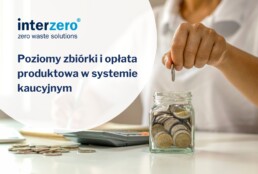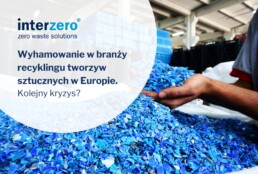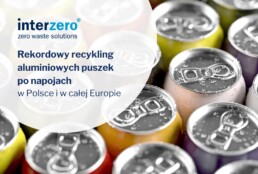Changes are coming to the environmental decision-making procedure
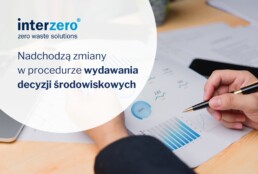
Newsletter
The amendment will change the rules for issuing environmental decisions
In the last days of April, the climate and environment ministry announced that it was working on a draft amendment to the law regulating the procedure for issuing environmental decisions. Planned changes are to concern mainly the environmental decisions required for investments that have a significant impact on the environment.
As the government website reads, the need to amend the legislation is due to:
the need to improve the quality of environmental impact assessment procedures, seal and streamline the system, identified during the review of existing legislation and identified problems in the application of current legislation.
The amendment is intended to cover almost all aspects of issuing environmental decisions, from the parties to the proceedings, through the applications and the authorities competent to issue the decision, to issues relating to the use of the decision issued.
For the moment only the aims and objectives of the proposed legislation are known. The bill is scheduled to be adopted by the government in Q3 2025.
Electronic applications will go to the district chiefs
The amendment provides for the introduction of an obligation to submit applications for environmental decisions only in electronic form. At the same time there will be a reduction in the number of annexes that the applicant or his/her representative must provide on paper.
This is not the end of the story - the competence of the authorities will also change. Currently, the competence to issue a decision is dispersed - depending on the type of project, the application is submitted to the head of the municipality, mayor or city president. Ultimately, their tasks are to be taken over by the starost. The Ministry of the Environment and Ecology argues that the move is intended to improve the quality of the proceedings. The possibility of delegating cases to the RDEP other than those arising from local jurisdiction will also disappear. As a reminder, until now, the regional directorates with the heaviest workloads were able to transfer some of the pending applications to directorates in other regions.
Consultative and conciliatory bodies with extended competences
The IOC also aims to ensure that the bodies involved in the opinion can subsequently comment on the changes and new solutions introduced during the environmental impact assessment. Furthermore, the authorities will have the opportunity to indicate a different variant of the investment than that proposed by the investor. Currently, they are only entitled to such an entitlement if the option chosen by the developer is not feasible.
The amendment also provides for clarification of the scope of documents to be submitted to the authorities providing opinions and consultations. The body responsible for drafting the document subject to strategic environmental assessment will have to make the results of the monitoring carried out available to the authorities which were involved in the opinion and agreement in the strategic assessment and to the public.
Clarification of the catalogue of parties to proceedings and broader public participation
The amendment to the Act also aims to remove doubts of interpretation concerning, inter alia, the parties to the proceedings and participants on the rights of a party. In addition, the Ministry of Climate and Environment plans to clarify which rights in rem (ownership, lease, usufruct) should be taken into account when determining the catalogue of parties. We are therefore likely to see a closed the catalogue of entities which may be parties to proceedings for an environmental decision.
A significant improvement will be increasing the number of parties subject to the use of notice by public notice. Such a change is intended to allow for more frequent, direct service of notices to parties concerning proceedings.
The amended legislation is also intended to enable the public to participate more widely in the proceedings. In specific situations (if the nature of the case warrants it), it will be possible to extend the deadline for the submission of comments and applications by the public. At the same time, the body competent to conduct the environmental impact assessment will be exempted from the obligation to consider comments and applications received after the set deadline.
New rules for old environmental decisions - what can be expected?
The assumptions of the draft amendment also provide for the introduction of provisions regulating the use of environmental decisions already issued.
- Withholding a decision or revoking immediate enforceability means stopping the investment
An important piece of information for investors is the planned change to the effects of withholding an environmental decision and revoking the rigour of immediate enforceability. Under the proposed regulations, both of these situations will involve the necessity to suspend investment works to the extent that they are reflected in the decision on environmental conditions.
- Extension of the validity of the environmental decision
The authorities are to be guided by the same standardised criteria when extending the expiry date of the decision to confirm the validity of the conditions for implementing the project.
- Validity of the decision independent of ownership rights
In order to avoid non-compliance with the obligations arising from environmental decisions by new owners of installations, the IOC plans to widen the circle of entities obliged to comply with these obligations and to ensure statutory continuity of compliance, independent of changes in ownership and the degree of implementation of the project.
Source: Draft Act amending the Act on providing information on the environment and its protection, public participation in environmental protection and environmental impact assessments, as well as certain other acts, https://www.gov.pl/web/premier/projekt-ustawy-o-zmianie-ustawy-o-udostepnianiu-informacji-o-srodowisku-i-jego-ochronie-udziale-spoleczenstwa-w-ochronie-srodowiska-oraz-o-ocenach-oddzialywania-na-srodowisko-oraz-niektorych-innych-ustaw8
Poland with the worst tyre recycling system in Europe
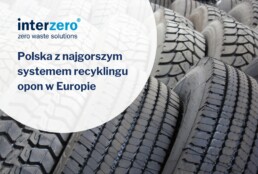
Newsletter
The 10 deadly sins of Polish tyre recycling
Poland's tyre ROP has not worked for many years, recovery levels are not in line with EU regulations and the whole tyre recycling system in our country is dysfunctional - these are the conclusions of the report A story that goes round and round developed by the Polish Tyre Recycling Association (PSRO). At the beginning of the publication, the authors list 10 facts that show the scale of the problem.
Among all EU Member States Poland is in the infamous 1st place in terms of the number of unused tyres - we are responsible for 60% of the mass of all untreated tyres throughout the Community! We also have lowest effective recycling rate, the second least demanding ROP regulations on tyres and the second lowest real environmental charges. Consequently:
- Every 4th pneumatic tyre and all solid tyres are not recycled or recovered,
- 1 in 1,000 tyres sold is discarded into the environment,
- Every 4th pneumatic tyre is incinerated in the furnaces of cement works. Every year, around 50,000 tyres go into these furnaces!
Meanwhile, domestic tyre recycling facilities can process 100% of tyres placed on the market. Each year, we buy between 280,000 tonnes and 350,000 tonnes of tyres, while the total capacity of processing plants is over 400,000 tonnes. As PSRO reports:
250 km - this is how many new motorways and motorways each year MAY be made safer, more durable and quieter by using recycled tyre products in their construction
What does the Polish ROP system look like on tyres?
The ROP system for tyres was introduced by the Act of 11 May 2001 on the obligations of entrepreneurs with regard to the management of certain waste and the product fee. It obliged manufacturers and importers to the achievement of the annual targets for recovery and recycling of tyres - they currently amount to:
- 75% for recovery,
- 15% for recycling.
Failure to comply with these obligations means that a product charge of PLN 2.20 per kg of tyres. Find out the most important information about the product levy on cars and tyres for the autocommerce >>.
Each manufacturer and importer is free to choose whether it wants to fulfil the obligations as an introducer on its own or whether it prefers to entrust these to a recovery organisation. Interzero takes over all the duties of tyre introducers, including those of car dealers and other traders. Find out why you should hand over your tyre recovery and recycling duty to Interzero!
Tyre collection and recycling system to be improved - what should the new tyre ROP be?
The PSRO report indicates that the Polish ROP and tyre recycling system not implements the polluter-pays principle", and it is not the responsibility of manufacturers and importers, but of municipalities (including PSZOKs) and tyre recyclers carrying out collections. It is necessary to reverse this mechanism and shift the responsibility to those introducing the. According to the PSRO, this will require, among other things:
- Increase annual levels of recycling (to 50%) and recovery (to 100%) of tyres.
- To also cover solid tyres, which are currently excluded from the ROP, under the extended manufacturer's liability scheme.
- Sealing the tyre recovery and recycling system.
- Adhering to the statutory waste hierarchy - promoting recycling before incineration.
In addition, the authors of the report draw attention to the need for implementation into Polish law of the provisions of the Waste Directive (2008/98/EC) and the Directive amending the Waste Directive (2018/851/EU), which would aim to give priority to recycling over other forms of recovery and to prevent the incineration of separately collected waste (including tyres).
What does tyre recycling look like?
Mechanical recycling (also known as raw material recycling) of waste tyres is the most environmentally beneficial way of managing them. It consists of a multi-stage grind (cutting, crushing, grinding), resulting in rubber pellets.
As the authors of the report point out, submitting tyres for mechanical recycling reduces their carbon footprint by 4 to 5 times compared to incineration. It also significantly reduces water consumption and environmental impact by 76-80%.
How do I send my tyres for recycling? Book a professional waste tyre collection at Interzero! Fill in the short form and get the best offer for tyre disposal >>
What is produced from tyre recycling?
The mechanical recycling process of waste tyres does not only recover rubber granules, but also steel wire and textile cord. The pellets are used, among other things, for the manufacture of:
- bituminous surfaces, e.g. for playgrounds, running tracks and playing fields,
- anti-vibration pads,
- industrial carpets,
- road surfaces (as a component of asphalt).
The recovered steel is remelted and returned to circulation. Textile cord is currently used as an alternative fuel; however, work is underway to use it in thermal insulation materials and in construction and road building.
Used tyres can also be retreadedwhich will make them reusable without having to process them in their entirety. Old tyres are also used to build retention walls in civil engineering (e.g. as barriers on race tracks) and water engineering (e.g. as bumpers).
Sources:
- Polish Tyre Recyclers Association, A story that goes round and round. A report on the long-standing dysfunctions of the tyre recycling system in Poland, including how 25 000 tyres a year end up in wild landfills, https://psro.eu/wp-content/uploads/2024/10/Raport-PSRO-2024.pdf
EUDR: What companies should know about the new EU deforestation regulation
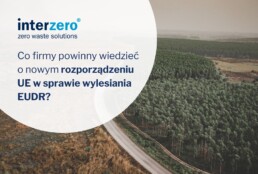
Newsletter
What is the EUDR?
The aim of the EUDR is to prevent the import of products into the EU market that contribute to global deforestation. In particular, the regulation concerns raw materials such as palm oil, soy, coffee, cocoa, beef (meat), rubber and woodbut also processed products containing these raw materials, such as chocolate, paper or furniture. The EUDR requires companies to ensure that all affected products have clearly not caused deforestation and comply with the legal requirements of the country of production.
For what purpose was the EUDR created?
The EU contributes significantly to global deforestation because there is a demand in the Union for many agricultural products from deforested areas. Not only are forests an important reservoir of CO2 and habitat for many animal species, they are also the basis of life for many indigenous peoples. The EUDR is intended to help stop the conversion of forests to agricultural land and reduce the pressure on natural resource extraction. Another important aspect is the protection of biodiversity and the prevention of illegal displacement of communities and indigenous peoples.
Which products does this apply to?
The EUDR applies to various commodities and their derivatives, including:
- Palm oil
- Soy
- Coffee
- Cocoa
- Beef (but not milk)
- Rubber
- Wood products (including paper, furniture, charcoal)
These products must be or free from deforestation, or include a detailed due diligence statement that proves that deforestation did not lead to the product. It does not matter whether the products were produced in the EU or in other countries - the EUDR applies worldwide.
What requirements are placed on companies?
Companies must prove that their products meet the following conditions:
- Non-deforestation: raw materials must not come from land where deforestation has taken place after 31 December 2020. Furthermore, logging must be carried out in a way that does not harm the forest ecosystem.
- Compliance with the legislation of the producer country: In addition to EU requirements, manufacturers must comply with the national environmental, labour and human rights legislation of the producing country.
- Due diligence statement: The companies' main obligation is to draw up and submit a due diligence declaration. In this declaration, companies must demonstrate that they have gathered all relevant information on the origin and production methods of their products and that the risks of deforestation and forest degradation have been assessed.

How does due diligence work?
Companies that place raw materials or products on the EU market must ensure that their products are free from deforestation through a three-step due diligence process:
- Information gathering: Companies need to collect product information such as origin, quantity and production methods. Geolocation data are used, among other things, to trace the origin of raw materials.
- Risk assessment: Based on the data collected, companies must carry out a risk assessment. Whether the product comes from a country with a high risk of deforestation is taken into account. Products from high-risk countries are subject to stricter requirements that require more detailed analysis and additional risk mitigation measures.
- Risk mitigation: Once a company identifies the risk of deforestation, it must take steps to reduce this risk. This can be done by switching to more sustainable sources of raw materials or by controlling suppliers.
When does the regulation come into force?
The EUDR will enter in life in stages:
- From 30 December 2025.: The regulation applies to large and medium-sized enterprises.
- From 30 June 2026.: Small and micro enterprises will also have to comply with the EUDR.
This approach aims to give companies sufficient time to prepare for the new regulations. Companies must submit due diligence statements and all relevant documentation through the EU TRACES digital information system.
Challenges and criticism
While the EUDR is an important step towards protecting the world's forests, there are also challenges and criticisms around it. Some companies are concerned that the additional documentation requirements and associated bureaucracy will mean considerable effort. Small companies in particular face the challenge of implementing extensive requirements without the necessary infrastructure.
Furthermore, it is uncertain exactly how the various requirements will be implemented and how the regulation will affect companies' procurement costs. It remains to be seen how the regulation will affect international trade, especially if companies in less regulated countries can resort to less stringent regulations.
What does this mean for companies?
Companies need to prepare for the new regulations by being transparent about their supply chains and ensuring that all relevant data on the origin and production of their products is available. To comply, companies should take steps to vet their suppliers and document their due diligence obligations at an early stage.
EUDR ensures that companies operate in a more sustainable manner in the long term and take responsibility for their supply chains. Those who adapt in time can not only make sure they meet the new requirements, but also actively contribute to environmental protection.
Conclusions
EU Deforestation Regulation (EUDR) is a key step in the fight against global deforestation and poses new challenges for businesses. From 2025, companies will not only have to place non-deforestation products on the EU market, but also provide extensive evidence of the origin and sustainability of their products. This regulation helps to protect forests and their biodiversity worldwide and to combat global climate change.
Companies that prepare for EUDR requirements at an early stage have a clear competitive advantage when it comes to implementing sustainable supply chains.
We encourage you to read the article EUDR, or what do forests, consumption and EU regulations have in common? >>
EU to tighten regulations for granulate processing companies. There is an agreement to reduce microplastic spills
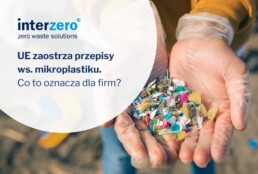
Newsletter
Preventing granular leakage as a priority of new EU regulations
The purpose of introducing new legislation at EU level is to creation of procedures for dealing with plastic pelletswhich will apply at all stages of the supply chain, both on land and at sea.
- Microplastics are everywhere - in the oceans, seas and even in food. Up to 7,300 truckloads of plastic granules enter the environment every year. The EU has today taken a groundbreaking step to reduce this pollution - adopting measures to prevent the release of granules and to ensure their proper handling, including in maritime transport," stresses Paulina Hennig-Kloska, Minister for Climate and Environment.
As the communication reads, each pellet processing installation will have to establish a risk management planwhich will address how to deal with uncontrolled, accidental spillage of microplastics into the environment. It will therefore be the responsibility of the operators to develop procedures for packaging, unloading and loading of the granules, in addition to proper training of personnel and preparation of the necessary equipment.
The planned regulations are already another on the way to reducing environmental pollution from microplastics. As a reminder, in 2023, Commission Regulation (EU) 2023/2055 introduced a series of restrictions on the sale of products to which microplastics are intentionally added (e.g. cosmetics, cleaning products, fertilisers, medical devices, synthetic surfaces in sports facilities). You can read more about this in the article: EU glitter ban.
Equal obligations for EU and non-EU companies, simplification for the smallest entities
Under the new rules obligations concerning the handling of plastic granulate will apply not only to companies based in the EU, but also to non-EU operatorswhich operate on the territory of at least one Member State. This refers mainly to carriers (both inland and maritime transport) and logistics operators providing, inter alia, transport, storage or warehousing services.
According to the EU Council's official website, the scope of obligations for operators will depend on the size of the organisation and the weight of the pellets processed.
- Major players processing more than 1,500 tonnes of pellets per year, will have to be certified by an independent body.
- For smaller companies, also processing more than 1,500 tonnes of pellets per year, there will be a provision for simplified one-stop certification procedure carried out within 5 years of the entry into force of the Regulation.
- Companies handling less than 1,500 tonnes of pellets per year and micro-enterprises will only have to issue their own declaration of conformity.
To ensure compliance with EU regulations, companies not established in the EU will have to appoint an authorised representative in the EU, who will carry out all tasks on their behalf with regard to the microplastics processed and transported. The institution of an authorised representative (ACR) Authorised representative, AR) is no novelty - it already exists both in EU legislation and in the legal orders of most Member States.
Special conditions for maritime transport
Companies transporting pellets and regranulate by sea will also have a the obligation to ensure the quality of packaging and to provide information on transportin accordance with the guidelines of the International Maritime Organisation. This is all the more important because maritime transport accounts for as much as 38% of pellet transport throughout the EU[i]and spills that occur during freight often have a disastrous impact on the environment.
Read more about the ecological consequences of unintentional microplastic emissions in the article: Toxic microplastics in the water - meet nurdle, the mermaid tears you find on the beach.
[i] Data for 2022, https://www.gov.pl/web/klimat/porozumienie-w-sprawie-walki-z-zanieczyszczeniem-mikroplastikiem
When will we see the new regulations?
The interim agreement will now have to be approved by the Council of the EU and the European Parliament. It will then be formally adopted by both institutions (after legal and linguistic review) and published in the Official Journal of the EU.
The new micro-platform legislation will take the form of a regulation. This means that they will apply directly, without the need for transposition into Member States' legal orders. Regulation will enter into force 2 years after publication. In order to facilitate compliance in maritime transport, there is a possibility to defer its application for one year (compared to the other provisions set out in the Regulation).
Sources:
- Plastic pellet losses: Council and Parliament agree on new rules to reduce microplastic pollution, https://www.consilium.europa.eu/en/press/press-releases/2025/04/08/plastic-pellet-losses-council-and-parliament-agree-on-new-rules-to-reduce-microplastic-pollution/
- Agreement on combating microplastic pollution, https://www.gov.pl/web/klimat/porozumienie-w-sprawie-walki-z-zanieczyszczeniem-mikroplastikiem
Net zero 2050 at risk? European Union may fail to meet climate neutrality target
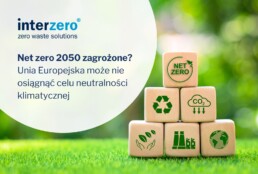
Newsletter
Climate neutrality 2050 unrealistic. WWF leaves no illusions
- The current rate of change is not enough for the European Union to achieve carbon neutrality by 2050, says Miroslaw Proppe, President of the World Wide Fund for Nature (WWF) Poland. - In my opinion today we have technologies that are sufficient to achieve only 70 per cent of this target.
According to the WWF president, the EU's ambitious target is also not helped by the Donald Trump administration's anti-climate policies. Watching events from overseas, including the US withdrawal from the Paris Agreement, many people may turn their backs on environmental action.
- In the absence of decarbonisation the world is on track to increase global warming by 3 degrees Celsius by 2100. [...] Investing just 2 per cent of global GDP would limit warming to less than 2 degrees Celsius and allow us to adapt to most of its consequences," concluded Mikołaj Troczyński of the WWF Poland Foundation. The expert referred to data from a March report by the Boston Consulting Group.
Achieving climate neutrality in 2050 would require an increase in clean technology investment to €28 trillion, or 4% of EU GDP. Importantly, the constraint is not just financial shortfalls, but also the state of technological development. As Proppe points out, the technologies needed to close the 30 per cent gap are currently in the testing phase and will not be deployable until a very distant future.
5% GDP over the next 25 years - that's the cost of decarbonisation in Poland
According to WWF expert estimates, the Polish road to decarbonisation will be even more costly than the transformation of the entire EU. According to various sources, achieving climate neutrality by 2050 would require an increase in decarbonisation expenditures to 4.5-5% GDP. Nikolai Trochinskiy points out, however, that freeing ourselves from coal could increase Poland's GDP by a minimum of 4%. The investment therefore seems justified, especially as staying with coal could cost more than 2 trillion zloty.
What is net zero, or climate neutrality?
Climate neutrality, also known as carbon neutrality or net zero, means maintaining the balance between atmospheric emissions and absorption of CO2 from the atmosphere. The purpose of such emissions balancing is to reduction of environmental pollution by reducing greenhouse gas emissions.
In pursuit of climate neutrality 2 mechanisms are most commonly used: offsetting of emissions (so-called carbon offset) and use of carbon dioxide canisters. The key natural sinks of CO2 from the atmosphere are forests, oceans and soil. It is estimated that they are capable of absorbing between 9.5 and 11 gigatonnes of CO2 per year. As the 2021 figures show, this is only a drop in the ocean of needs - annual global emissions for 2021 were as high as 37.8 gigatonnes of CO2.
Net zero 2050 as an objective of EU climate policy
The European Union wants to achieve climate neutrality by 2050. The first stop on the way to this goal is to reduce emissions by at least 55% by 2030. (the so-called Fit for 55). It presupposes reaching out to the so-called low hanging fruits - prioritising rapid and predictable emission reductions while enhancing the role of natural sinks. The next step is to achieve a 90 per cent reduction in emissions by 2040. In both cases, the reference point for calculations is the 1990 emissions level.
The EU's aim is to improve the use of forests as natural sinks. However, this alone is not enough - a number of measures are also needed to help offset emissions.
Zero-carbon by 2050 is a goal that stems from EU legislation - Regulation (EU) 2021/1119 of the European Parliament and of the Council obliges all EU institutions and Member States to take the necessary measures to balance emissions and achieve climate neutrality by 2050. Net zero is also a key tenet of the European Green Deal and is in line with international treaties, notably the Paris Agreement.
What about after 2050? As the regulation reads, after climate neutrality is achieved, the EU's target will be negative emissions. As with net zero 2050, this goal is to be achieved mainly by strengthening the role of natural sinks while reducing existing emissions.
Ecosystem restoration would help to maintain, manage and enhance natural sinks, as well as promote biodiversity and combat climate change at the same time. Furthermore, through their triple role of absorbing, storing and replacing, forests contribute to reducing greenhouse gas emissions into the atmosphere, while ensuring that forests continue to grow and provide many other services.
Sources:
- The European Union will not achieve carbon neutrality by 2050., https://portalkomunalny.pl/unia-europejska-nie-osiagnie-neutralnosci-emisyjnej-do-2050-r-581244/
- https://eur-lex.europa.eu/legal-content/PL/ALL/?uri=CELEX:32021R1119
Collection levels and product fee in a deposit system
Why do we need a deposit system? Minimum levels of separate collection of packaging
One of the main objectives of introducing a bail system in Poland is to achieving very high collection targets for packaging of beverages and the waste generated from these packages. According to experts, their achievement would not have been possible without deposit system. Its introduction was therefore a necessity, not an option.
The minimum levels of separate collection of packaging and packaging waste are set out in Annex 1a to the amended Act of 13 June 2013 on Packaging and Packaging Waste Management and amount to:
| Type of packaging | Level of separate collection | |
| between 2025 and 2028 | in 2029 and beyond | |
| single-use plastic beverage bottles up to 3 l | 77% | 90% |
| metal cans up to 1 l | 77% | 90% |
| Reusable glass bottles up to 1.5 litres | 77% | 90% |
Due to Postponement of the launch of the deposit scheme until 1 October 2025., the recycling levels for 2025 will be calculated on the basis of the weight of packaging placed on the market between 1 October and 31 December 2025.
Collection levels and deposit system implications of the SUP Directive
The need to set minimum collection levels in the Polish bail law arose from the need to the transposition into national law of Directive (EU) 2019/904 of the European Parliament and of the Council of 5 June 2019 on reducing the environmental impact of certain plastic products, abbreviated as follows SUP Directive.
Article 9 of the Directive committed all Member States to take measures to ensure by 2025. 77% the level of separate collection single-use plastic products. It also proposed measures that could help achieve this goal, i.e. the establishment of a deposit return system and the setting of targets for separate collection. As is not difficult to guess, Poland has implemented both of these proposals.
What if collection rates are not achieved? Product fee rates under the deposit system
The consequence of failing to achieve minimum collection rates under the deposit system is to the need to bring product levy. It shall be calculated separately for each type of packaging covered by the bail system.
In the initial period of the Polish deposit system, the rates of the product fee were set at a relatively low level, much lower than that provided for other types of packaging. However, they will gradually increase in 2026 and 2027.
|
Type of packaging |
Product fee rate in PLN/kg |
||
|
in 2025 |
in 2026. |
from 2027 |
|
| single-use plastic beverage bottles up to 3 l | 0,10 | 1,00 | 5,00 |
| metal cans up to 1 l | 0,10 | 1,00 | 5,00 |
| Reusable glass bottles up to 1.5 litres | 0,01 | 0,05 | 0,25 |
According to the legislator's original assumptions, the amount of the product fee for all types of packaging covered by the deposit system was to be identical. However, due to the significantly higher weight of glass bottles (compared to other packaging in the deposit system), it was decided to a reduction in the product fee for reusable glass bottles.
Responsibility for failing to achieve the required collection levels under the deposit system will lie with the introducer of packaged products and the representative entity operating the deposit system that the introducer has joined. Each of them will be obliged to pay 50% the amount of the product fee due.
Slowdown in the plastics recycling industry in Europe. Plastics Recyclers Europe speaks plainly about the crisis
The plastics recyclers' organisation, Plastics Recyclers Europe, is sounding the alarm: the plastics recycling industry is on the brink and facing the biggest declines in production and installed capacity in over 20 years. Unless these trends are reversed, the stagnation of the industry will continue, which in turn will jeopardise the EU's climate targets and the future of the circular economy.
Alarming plastic recycling figures in Europe: production down and imports up
The year 2023 was a critical year for most companies dealing with recycling of plastics. The recently published Plastics Recyclers Europe report confirmed what the industry has known for a long time - the current we are facing a sharp decline in demand for European recyclates, with rising energy costs and unrelenting competition from imported plastics. In 2023, the estimated Sector turnover down 12.5% compared to 2022, reaching EUR 9.1 billion. By €0.5bn (or 50%) on an annualised basis investment has also fallen, and the rate of growth in installed capacity decreased from 17% in 2021 to just 6% in 2023.
As a result, European production of recyclates has fallen by an average of 5% and the number of plant closures has risen sharply. As experts predict, this unfavourable trend will continue in 2025 and probably also in the following years. One reason for this is the gradual displacement of locally produced recyclate by imported plastics. Currently, the EU already imports approx. 20% of used virgin and recycled polymers, which tempt customers primarily with a much lower price.
Waste exports and uncontrolled imports of polymers are new trends in the plastics recycling market
Europe's polymer recycling industry also faces rising sourcing costs and increasingly limited access to plastic waste. From 2022 to 2023, their exports increased by as much as 36%, gradually depriving indigenous plants of raw material for production.
Wanting not wanting, the region is slowly backing away from its recycling ambitionsThe trend is towards processing waste outside Europe and then importing the resulting cheap recyclate. Interestingly, imported virgin polymers are also competing on price with European recycled plastics. This is significant a threat to the development of an intra-European closed loop economy and for the achievement of ambitious EU environmental goals.
As Plastics Recyclers Europe warns, cheap imported raw material often does not meet stringent European safety standardsand its massive influx could pose a threat not only to the polymer recycling industry, but also to consumers.
Europe loses leadership position in plastics production
The data shows that Europe's share of global plastics production has fallen by half, i.e. from 28% in 2002 to just 14% in 2022. The local industry is also struggling with a lack of demand for the plastics produced and processed in Europe, leading to a general stagnation along the value chain.
In response to the crisis facing the industry, 18 organisations representing the interests of companies present at different levels of the plastics supply chain are calling for immediate action at political and legislative level. Their demands include: the establishment of a single market for waste and recyclates, the harmonisation of best practices across the EU, the implementation of financial support schemes and the introduction of trade defence measures.
Business representatives include Ton Emans, president of Plastics Recyclers Europe, who says:
We call on EU policy makers to take a swift and decisive policy stance, put in place effective import controls and enforce existing legislation, including restricting imports of materials that do not meet equivalent EU sustainability and safety standards. These measures are crucial for the survival of the plastics recycling industry, which has already invested €5 billion between 2020 and 2023 just to meet mandatory targets.
Read also: European plastics recycling in trouble >>
From the information contained in the report "Plastics Recycling Industry Figures 2023" shows that to meet the requirements of the new Packaging and Packaging Waste Regulation (PPWR), an additional 2 million tonnes of HDPE and PP rigid recycling capacity will be needed by 2030, and an additional 5.7 million tonnes of recycling capacity will be required by 2040.
Sources:
- Crisis in EU Plastic Recycling Demands Immediate Action, https://plastics-recyclers-europe.prezly.com/crisis-in-eu-plastic-recycling-demands-immediate-action
- EU's competitiveness under severe threat: plastics sector at crossroads, https://plastics-recyclers-europe.prezly.com/eus-competitiveness-under-severe-threat-plastics-sector-at-crossroads
- Publications - Plastics Recyclers Europe
Paper and board packaging production up, newsprint down - Cepi presents preliminary statistics for 2024.
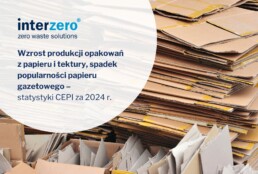
Paper and board packaging production up, newsprint down - Cepi presents preliminary statistics for 2024.
The Confederation of the European Paper Industry (CEPI) has published preliminary paper industry statistics for 2024. The latest figures herald a thaw - after years of post-pandemic declines, we have finally seen increases, and in almost all paper and board categories. However, the entire industry faces entirely new challenges.
Packaging responsible for 63% overall paper production
Let's start with the key statistics for the packaging and recycling industries. As Cepi's preliminary statistics show, up to 63% of the paper and board produced in 2024 was packaging paper. This sum consists of:
- corrugated cardboard - 41.2%,
- packaging papers - 5.5%.
- other packaging papers - 16.3%,
Moreover, compared to 2023 Packaging paper production volumes increased by an average of 6.5%. The largest increases (14.4%) were recorded in the segment of packaging papers used in the manufacture of paper bags. In second place (9.9%) were cardboard and other packaging boards used for retail packaging. Corrugated board (up 4.3%) used primarily for the production of bulk and transport packaging completed the podium.
Increases in paper packaging production volumes were followed by increased use of recycled paper. In year-on-year terms, it amounted to 4,1%.
Growth in consumption and production in Cepi countries and globally
As reported in Cepi's preliminary report, in 2024 the member countries recorded a 5.2% increase in paper and board production, reaching 77.8 million tonnes. The industry also grew globally over the same period, with global paper and board production increasing by 3.6% by 2023.
The increase in paper production in the Cepi States was also accompanied by a substantial 7.5% increase in consumption of paper and paper products. Interestingly, almost all paper categories grew except newsprint, which saw a 1.3% decline in 2024, mechanical coated paper (down 2.1%) and uncoated paper (down 3%).
See what raw materials are used to make paper in Europe >>
Jori Ringman, CEO of Cepi, said:
Recently, we have seen positive signs of growth in the pulp and paper sector. Whether this growth can be sustained depends partly on what the EU institutions do so that we can compete on a level playing field not only with other pulp and paper producers in the world, but also with fossil-based industries.
Paper and packaging industry under pressure from consumers
European paper and board packaging companies therefore face 2 huge challenges: remaining competitive against global leaders from outside the EU and meeting the increasingly high expectations of consumers, who are looking closely not only at recyclability but also at packaging sizes.
Mondi's latest survey shows that simply protecting the product is no longer enough, with 78% respondents indicating that the recyclability of shipping packaging is either important or very important to them. 80% Researcher wants environmentally friendly packaging, while the 71% prefers paper-based raw material packaging. At the same time consumers are not prepared to pay extra for more sustainable packaging - 38% of them puts the matter on a knife edge and will not pay a penny more. 27% may pay more by a token 1%. Interestingly, the boomer generation will be the most likely to pay extra for the green package, with Gen Z resisting the strongest.
Consumers are therefore making demands, but they are also making the boundaries clear - The packaging is supposed to be environmentally friendly, fit properly, easy to open and reclose and free, at least from their perspective. As far as 40% of those surveyed will in future avoid retailers who use excess packaging, and 20% will abandon the purchase due to the lack of sustainable packaging.
Sources:
- Cepi, Preliminary statistics 2024. European pulp & paper industry, https://www.cepi.org/wp-content/uploads/2025/02/FINAL-Cepi-Preliminary-Statistics-2024.pdf
- Mondi Group eCommerce trend report: Sustainability and its impact on packaging and online shopping choices, https://144089501.fs1.hubspotusercontent-eu1.net/hubfs/144089501/Group%20eCommerce/Mondi%20Group%20eCom%20trend%20report%202025.pdf
Record recycling of aluminium beverage cans
Record recycling of aluminium beverage cans in Poland and across Europe
The European aluminium can recycling industry is on track to achieve 100% circularity in 2050. According to the latest figures, in 2022 the recycling rate of this popular beverage packaging was almost 75%, with an increase of 10,000 tonnes of recovered aluminium. Could something stand in the way of a complete closure of the circulation?
Europe has returned 74.6% of aluminium cans to circulation
On 10 February 2025, a report by Metal Packaging Europe and European Aluminium was published, showing that up to 74.6% of aluminium beverage cans placed on the market will be recycled throughout 2022. In percentage terms, this result represents a slight (1%) decrease compared to 2021, so why the mentioned record?
As the report reads in 2022. the total amount of aluminium recovered from beverage cans was a record 580,000 tonnes.. On an annual basis, we have therefore seen an increase of 10,000 tonnes (or 1.7%). This is due to increasing consumption - more packaging is brought to market in 2022, and this in turn increased the total weight of packaging waste entering the recycling stream. At the same time, with the collection and sorting system remaining constant, the percentage of recycling (as a percentage) has fallen slightly as a result of the greater increase in the production and consumption of cans[i].
The authors of the report relied on data from the EU Member States, the United Kingdom, Switzerland, Norway and Iceland. How does Poland compare to Europe?
Poland above the European average. How many cans have we recycled?
Beverage can recycling in Poland has remained at a consistently high level for several years. Data from the RECAL Foundation shows that in 2022. the level of recycling of alu cans was as high as 80%. It was only better in 2017-2018 (81% and 80.5% respectively)[ii]..
Poland is among the countries with the highest level of can recycling. We are ahead of 11 countries, most of which already have well-functioning deposit systems. It is in the development of deposit systems in more European countries, representatives of Metal Packaging Europe and European Aluminium see opportunities for a further increase in the percentage of cans returned to circulation.
Packaging director at European Aluminium, Andy Doran, commented:
"The continued high level of recycling reinforces our belief that we are moving in the right direction. The latest results also show that it is a marathon, not a sprint. 2022 has seen the implementation of several deposit schemes and as they mature, recycling rates will continue to rise."
CEO of Metal Packaging Europe, Krassimira Kazashka, she added:
"We welcome the latest results and believe that the industry remains on track to achieve 100% circularity of aluminium cans by 2050. [...] Following the EU's recent adoption of the Packaging and Packaging Waste Regulation, we encourage Member States to implement sustainable and efficient deposit systems that enable full circularity of aluminium cans through 'can-to-can' recycling."
Increased aluminium recycling means reduced environmental burden
The Metal Packaging Europe and European Aluminium report also refers to the environmental benefits of recycling aluminium packaging waste. In 2022, the processing of just one type of waste - an aluminium beverage can - allowed the reduce emissions by 5.4 million tonnes of CO₂eq (carbon dioxide equivalent). This amount corresponds to the annual emissions of a city with more than half a million inhabitants, such as Oslo or Genoa.
Read more about the environmental benefits of aluminium recycling in the article: Aluminium recycling - can you close the loop in 60 days?
Sources:
[1] Metal Packaging Europe and European Aluminium, Record Number of Used Aluminium Beverage Cans Recycled as Industry Drives Toward 100% Circularity by 2050, https://european-aluminium.eu/wp-content/uploads/2025/02/EA-MPE-BevCan-2022-Recycling-Results-Press-Release-10-February-2025.pdf.
[2] Recycling, https://recal.pl/recykling/
32 million plastic bags a year. Polish fashion e-commerce is drowning in waste

32 million plastic bags a year. Polish fashion e-commerce is drowning in waste
Last year, Polish fashion e-commerce used as many as 16 million plastic bags. This figure is set to double in the coming years, to a skyrocketing 32 million a year. This trend does not necessarily please consumers - almost ¾ of them prefer to receive a parcel wrapped in paper and cardboard rather than plastic. What does the fashion industry have to say about this?
The environmental costs of the fashion industry are not just about textile waste
We don't like it and we love it at the same time - the fashion industry has long had the patch of being one of the least environmentally friendly, but that hasn't stopped it from reaching new production and sales records. According to an analysis by Business Insider Fashion companies account for 10% of global carbon emissions. By comparison, the same amount is emitted by the entire European Union!
- Every year, 100 million garments and 92 million tonnes of textile waste are produced worldwide.
- The textile industry consumes 10-20% of all pesticides used worldwide.
- Each year, for the production of cellulose fabrics, a more than 150 million trees, of which 30% are from primary or endangered forests.
- Textiles is responsible for 20% of global water pollution[i].
- The fabric dyeing process alone generates approx. 93 billion m3 sewage[ii]..
The figures quoted are for textiles alone. It is worth remembering that the fashion industry is not only about the production of clothing, but also about logistics and retailing, including online. The latter contributes to generation of waste from shipping containers, looked at by Development Economics in a study commissioned by DS Smith, the global leader in sustainable packaging.
2,500 every hour, 147 million in 5 years - that's how many plastic bags Polish fashion e-commerce will generate
DS study. Smith shows that in the coming years The Polish fashion e-commerce sector will use as much as 32 million pieces of plastic packaging shipping per year, which will translate into more than 2500 bags delivered every hour. By 2030, as many as 147 million plastic bags will be used in this way.
- While online sales are increasing, online retailers are using more plastic bags compared to stationary shops. - says Katarzyna Kala-Kowalska, CEO of DS Smith Polska.
It might seem that in an era of increasing environmental awareness, both companies and consumers are increasingly moving away from plastic in favour of more sustainable alternatives. However, the statistics are inexorable - among the large European economies, it is the Poland is the fastest growing market for mail order plastic packaging, so readily used by fashion e-commerce, among others. It comes as no surprise, then, that experts forecast as much as 102% increase in plastic bag consumption (from 16md to 32bn) by 2030.
The plastic garment bag has only 1 life - lack of recycling a sore point for Polish e-commerce
Plastic mailing bags are almost never recycled. Only 6% of such packaging used by fashion e-commerce was reused or recycled. The remaining 94% of waste ended its life after just 1 use in either a landfill or incinerator.
Is there an alternative to plastic bags?
As much as possible. Quite the obvious substitute for plastic is paper (classic and expanded envelopes) and cardboard (cartons, cardboard boxes, corrugated envelopes).
- The switch from plastic to paper mailing bags was a turning point. Following the introduction of our first paper bags, customer satisfaction with our new packaging increased by 16 percentage points year-on-year. - says David Fischer, Head of Sustainable Logistics and Packaging at Zalando.
Zalando's observations are also confirmed by the results of the DS study. Smith:
- 57% Polish consumers feel remorse about the amount of plastic in which their orders are delivered.
- 77% wants to phase out plastic bags if replacements are available.
- 72% respondents say they prefer to receive their purchases packaged in cardboard or paper.
- 56% declare that they would be more likely to order from a clothing shop that uses recyclable packaging.
- Eliminating single-use plastic products remains a key challenge for the e-commerce industry in achieving sustainability goals. Finding the ideal solution is quite a challenge, especially in an environment where more sustainable alternatives are not yet fully scalable or may not meet the minimum requirements in terms of both sustainability and operational implementability. - David Fischer adds.
Many mail order packaging companies are now testing reusable packaging. From 2023 onwards, InPost offers deliveries in EkoBox, a collapsible package that can be returned via Parcel Machine. The developer of innovative reusable packaging for e-commerce was also the Loopako brand, which has now gone out of business. In favour of such solutions are not only environmental and image considerations, but also the possibility of optimising the use of reusable packaging. product levy for the packaging introduced and the opportunity to reduce the cost associated with the transfer of the recycling obligation to a recovery organisation. Instead, a significant downside could be the increase in emissions caused by the return of such packages, as well as the cost of the courier service that fashion e-commerce would have to bear.
Source: DS. Smith, Let plastic go out of fashion: by 2030, online fashion shops inPoland will use 147 million plastic bags, https://www.dssmith.com/pl/media/aktualnosci/2025/4/pozwolmy-plastikowi-wyjsc-z-mody-do-2030-roku-internetowe-sklepy-z-moda-w-polsce-zuzyja-147-milionow-plastikowych-toreb
[i] 10 frightening statistics on fast fashion, https://magazynbiomasa.pl/10-zatrwazajacych-statystyk-dotyczacych-fast-fashion/
[ii]. K. Shedlock, S. Feldstein, At what cost? Unravelling the harms of the fast fashion industry, https://www.biologicaldiversity.org/programs/population_and_sustainability/pdfs/Unravelling-Harms-of-Fast-Fashion-Full-Report-2023-02.pdf
